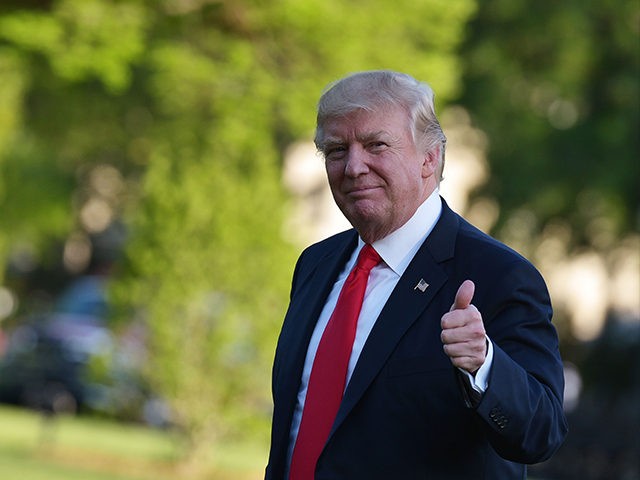President Donald Trump inherited a weaker economy from Barack Obama than previously thought. But the improved conditions perceived by business and consumers since Trump’s victory in November may have cushioned the decline in economic growth.
The Commerce Department reported on Friday its preliminary statistical snapshot of the U.S. economy in the first three months of 2017. It showed that the economy barely expanded, growing at an annual rate of 0.7 percent. That was the weakest quarterly growth in three years and a sharp decline from the 2.1 percent annualized rate recorded for the final three months of 2017.
There were signs of a Trump-induced revival of business activity in the quarter. Consistent with surveys that have shown rising business sentiment, business investment improved, with capital spending rising 9.4 percent. That’s the highest growth in around three years. Spending on equipment rose at a 9.1 percent annualized rate. Investment in home building rose at a 13.7 percent rate. Exports rose at a 5.8 percent rate, and imports rose at a rate of 4.1 percent. The trade deficit fell.
A separate report from the Labor Department Friday showed that its employment cost index–roughly, a proxy for wages–had its best performance in nearly a decade, rising by 0.8 percent.
Although overall growth in the first quarter was sluggish, this did not come as much of a surprise. Two months ago, economists were predicting two percent growth. But following some bad news on retail spending and business inventories, Wall Street economists revised down their estimates so that they forecast growth to come in at 0.9 percent.
The government has acknowledged that first-quarter GDP numbers tend to underperform because of problems with season adjustments that it is working to rectify. Most experts say the data likely reflected the unusually warm temperatures in many parts of the country in January and February, lowering spending on things like electricity and natural gas to heat their homes.
Despite data that has revealed rising consumer sentiment, consumption rose by only 0.3 percent. In the last quarter of 2016, consumption rose by 3.5 percent. It is likely that some of this earlier expansion may have been borrowed from the first quarter, with consumers spending less in the beginning of 2017 because they had made so many purchases in 2016. Lower than expected automobile sales also dragged on growth.
Business investment in inventories declined in the first quarter, to $10.3 billion from $49.6 billion. As a result, inventories subtracted 0.93 percentage points from GDP growth. Similar to consumer spending, the sharp decline may be an indicator that some of the fourth quarter growth–which added nearly one percentage point to GDP–was borrowed from the first quarter.
Most economists believe the economy is picking up speed. The consensus estimate on Wall Street is for 2.8% annualized growth in the second quarter. Some expect that first quarter number will be revised upward, given the apparent disconnect between the GDP report and a series of strong job reports, stronger-than-expected corporate earnings, and so-called “soft data” estimates contained in consumer sentiment and corporate leadership surveys.
Nonetheless, the sluggish first-quarter numbers could give ammunition to the Trump administration and Capitol Hill Republicans as they fight for tax cuts and infrastructure spending. It will be much harder for critics of Trump’s agenda to argue that the economy is “great already.”
The Fed is likely to consider the sluggishness as temporary when it meets next week. If the GDP number has any effect on the views of central bankers, it will likely be to provide reassurance that there is no pressing need to raise rates quickly or take actions to offset the Trump administration’s plans to stimulate the economy.

COMMENTS
Please let us know if you're having issues with commenting.